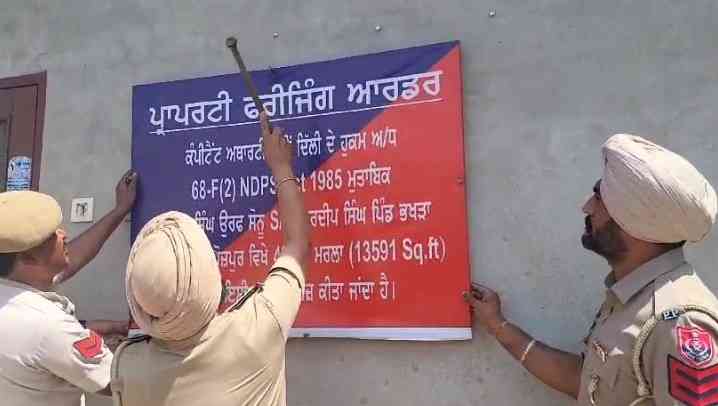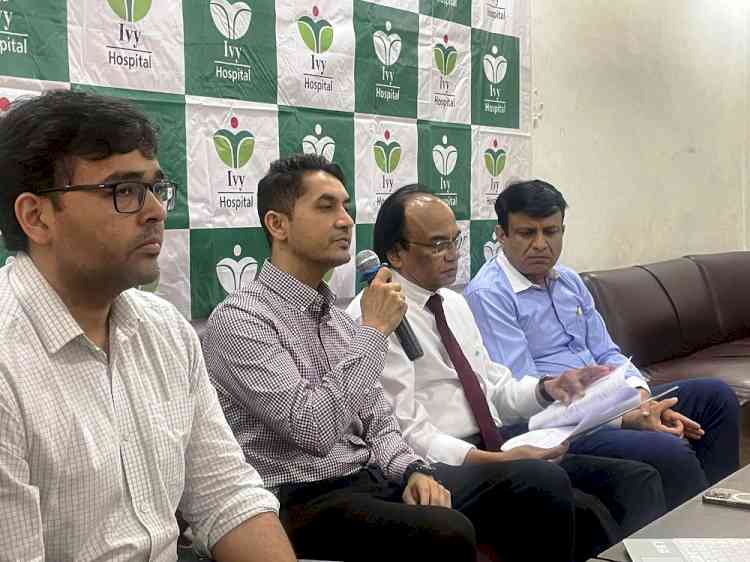Max Hospital introduces unique life saving tool for brain stroke patients
Author(s): City Air NewsMax Super Speciality Hospital, Mohali, a leading healthcare services provider of the region, today launched the Transcranial Doppler (TCD), a unique tool for prevention and treatment of stroke. Chandigarh, August...


Max Super Speciality Hospital, Mohali, a leading healthcare services provider of the region, today launched the Transcranial Doppler (TCD), a unique tool for prevention and treatment of stroke.
Chandigarh, August 13, 2013: Continuing its endeavor to provide state of the art care to patients with brain stroke, Max Super Speciality Hospital, Mohali, a leading healthcare services provider of the region, today launched the Transcranial Doppler (TCD), a unique tool for prevention and treatment of stroke.
Max Hospital, Mohali is the first private hospital in tricity & Punjab to acquire this innovative technology which is a unique tool in treatment of stroke patients. TCD is a lifesaving technology for prevention and treatment of stroke. TCD is used either done in the initial hours of the stroke or later as needed in the treatment.
Explaining the functioning of this new diagnostic tool, Dr Deepak Gupta, Consultant Neurology and Stroke Specialist at Max Super Speciality Hospital Mohali, said that TCD was a diagnostic tool that assessed the blood flow in the arteries of the brain. It was a special machine which was approximately the size of a computer screen and was portable. A probe (a pen like device) was attached to the machine by means of a simple cable . In the TCD examination, the probe was placed on the skull at various locations. The probe transmits ultrasound waves to the brain which were reflected back to the probe by the blood cells in the brain arteries, thereby allowing an estimation of the blood flow. In this way the doctor could diagnose any problem like blockade, narrowing or clots in the examined arteries, he remarked.
An exclusive property of TCD is that it is the only means of "real time" (live) evaluation of blood flow in the brain arteries. This real time monitoring enables the doctor to see how the brain clot is responding to blood thinning drugs and if any change is required in the treatment flow. It thereby facilitates doctors to optimally use blood thinners and hence avoid bleeding complications. This ultimately translates into safety and efficacy in treatment. Considering its ability to visualize real time blood flow, TCD can show much smaller clots also in the brain arteries which may get transformed into larger clots in the future (technically called emboli monitoring, which cannot be done by any other test/ angiography). TCD is the perfect aid for doctors to decide the best treatment for preventing disability which commonly arises from a stroke.
Angiography is another way to study blood flow in the brain. Angiography can be done with a CT scanner, MRI scanner or digitally. However, TCD has certain distinct advantages over any kind of angiography, informed Dr Gupta adding it was non-invasive, completely painless and did not involve any injection or dye administration. It was totally free of any side effects and thus could be repeated multiple times if needed. It was less expensive and could be performed at the patient's bedside, maintained Dr Gupta.
Interestingly, no kind of preparation such as fasting, missing regular medications is required for diagnosis through TCD. A complete TCD exam lasts from 30 minutes to an hour depending on the indication. Major indications of TCD are: thrombolysis in hyperacute stroke, evaluation of intracranial artery steno?occlusive disease (stated simply, to study any blockadge in the brain artery), detection of microembolic signals, evaluation of right to left shunts in the heart (simply stated, small holes in the heart which can cause strokes) and subarachnoid haemorrhage.
In short, by the real time evaluation of blood flow in the brain, TCD gives indispensable information in a stroke patient which is timely and life saving.

 cityairnews
cityairnews 
















